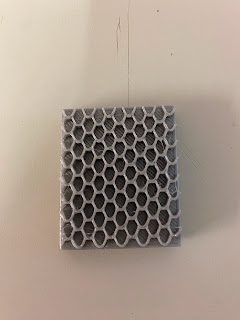Religion and Art
Religion and Art
Religious art is artistic imagery using religious inspiration and motifs which is often made to 'uplift the mind to the spiritual'. It was most commonly used (especially in Christianity) to portray the stories in the bible or other religious texts, before the masses could read, so they could still partake in the religion.
Judith Beheading Holofernes by Caravaggio 1598
In this painting, Caravaggio depicts the young widow Judith beheading Holofernes, an Assyrian General who was sent to destroy Judith's home, the city of Bethulia. The painting uses a mixture of stark light and shadows to emphasise the dramatic situation and to highlight the facial expressions and muscle tones of the subjects. Although the bottom half is very busy, the top portion of the painting is filled with a draping piece of fabric. Although this is not a necessary addition, the contrast of the black and the flowing red highlights the brutality in which this murder takes place.
This painting particularly stood out to me from other religious paintings from the same time because it's not often that you see women being portrayed as strong, independent characters. They are often instead either naked, kneeling or serving another man. This painting, however, depicts Judith as a woman with a specific end point in mind, she has come to take revenge on the man that is threatening to destroy her life, and she executes her plan with efficiency, without showing any remorse or emotion.
The facial expressions in this painting are crucial, I believe, to the overall effect. Holofernes has a look of despair and pain, whereas Judith shows no hint of sadness or any moral conflict.
Black Cube by Gregor Schneider from 2005
The Cube is a 46 ft tall sculpture that has been placed in many different locations since 2005. It is covered in black fabric, allowing for a matte finish, as no light can be reflected back out. It was inspired by the Kaaba (the building at the centre of Islam's most important mosque, the Masjid al-Haram) in Mecca, Saudi Arabia.This piece caused quite a lot of controversy when applying for it to be placed at each location, but not for the reason you may think. The main thing stopping it from being placed in places such as Venice and Berlin was 'political reasons'. City officials were concerned that it might offend or 'provoke' muslims, except no practising muslims ever came out to object to the Cube's placement or construction. As a matter of fact, Nadeem Elyas, the chairman of the country's (Germany) Central Council on Muslims, stated in public forums that he thought 'Mr Schneider's project was undertaken with 'honour and dignity', and that the decision to decline it was 'not conductive to dialogue between Muslims and Christians''.
I find this whole process so interesting. The way that this piece was refused by so many museums and spaces due to the belief that it could offend people of the muslim faith, without actually consulting anybody, shows how scared people are about being 'politically correct', that they end up making decisions from their own beliefs and assumptions.
.jpeg)




Comments
Post a Comment